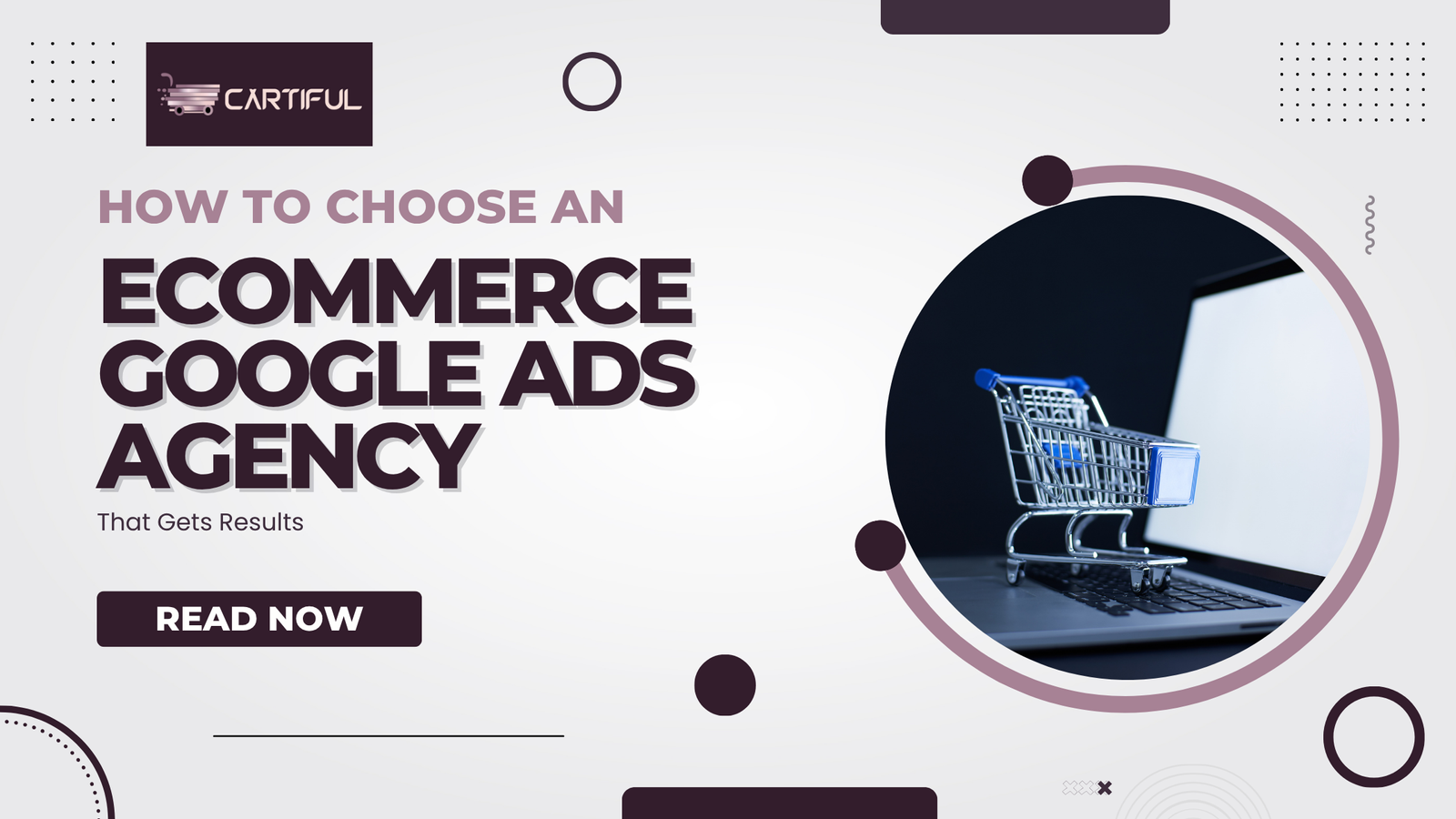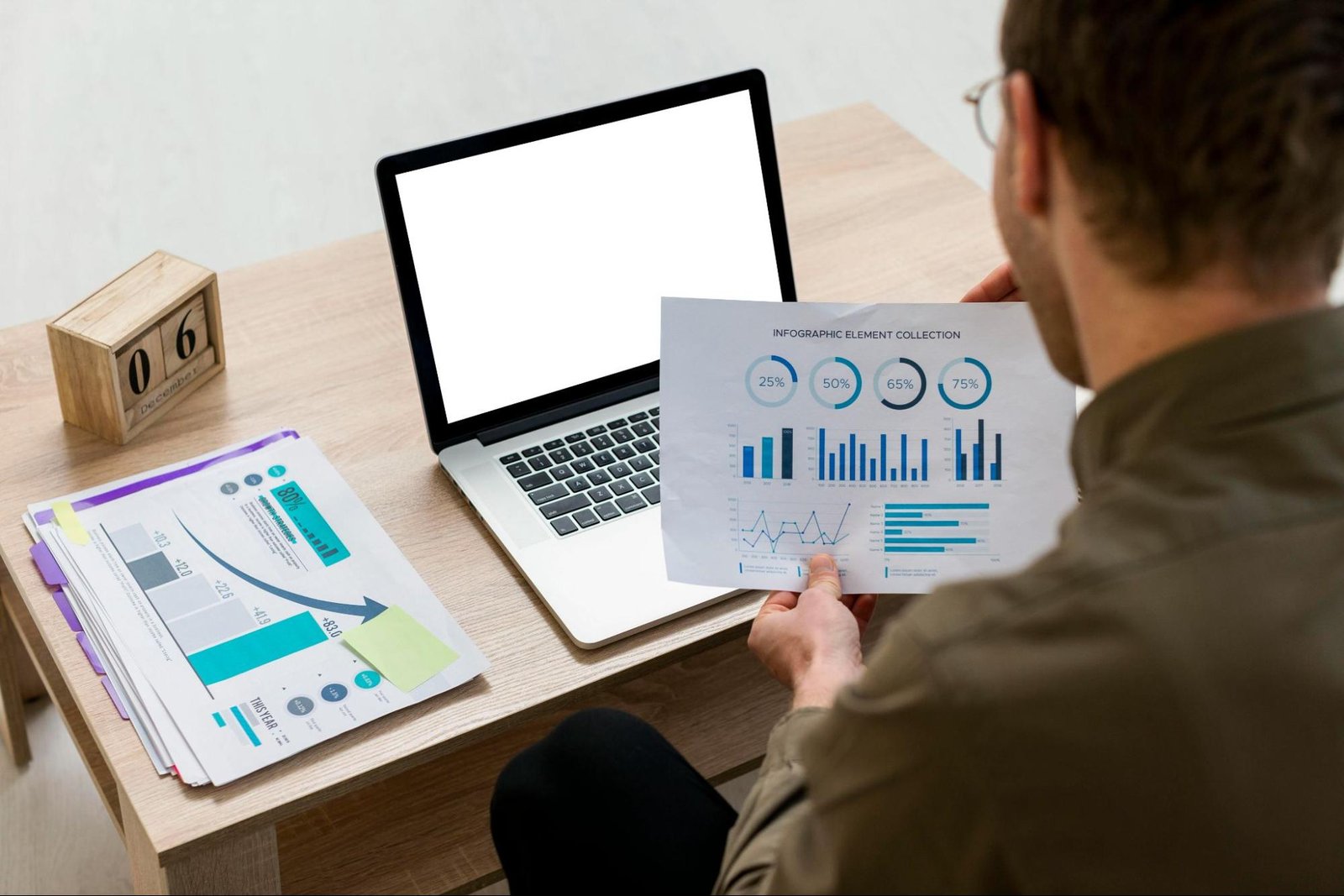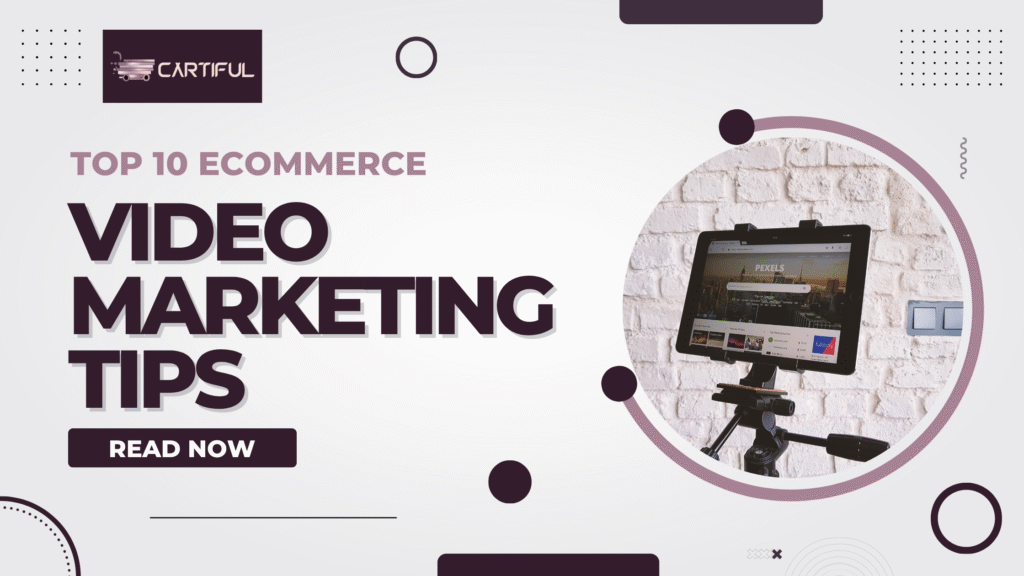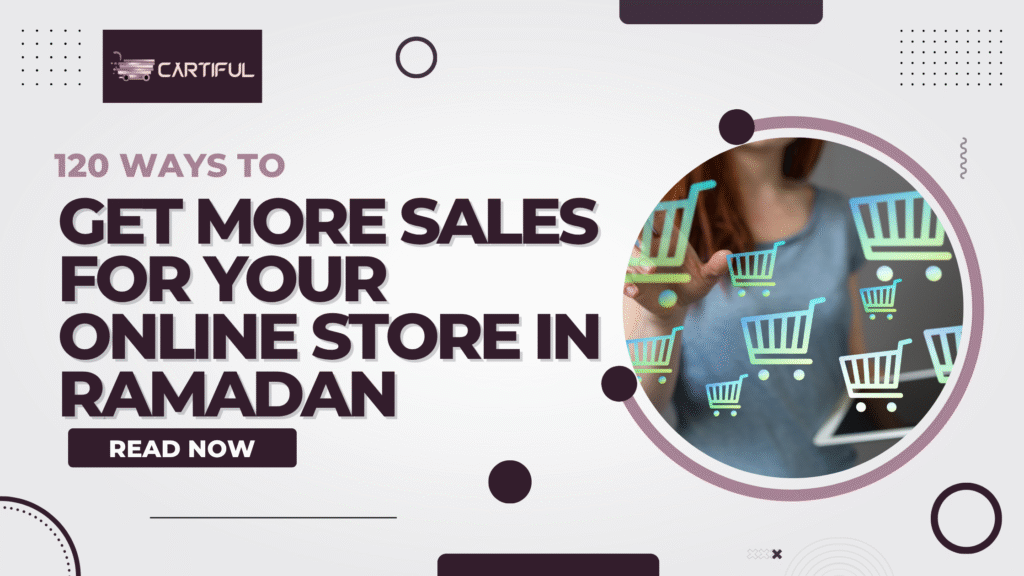If your Google Ads campaigns are live, but the results still feel underwhelming, you’re not alone. Many ecommerce brands spend thousands on ads and still struggle with inconsistent performance, poor conversion tracking, and stagnant Google Shopping results. The problem often isn’t the platform; it’s the strategy, the setup, and the team.
A strong ecommerce Google Ads agency does more than launch ads. It brings a clear structure, sharp keyword research, clean product feeds, and full-funnel thinking from prospecting to conversion.
This guide breaks down what to look for in a partner who actually understands how to scale ecommerce. Whether you’re managing a fast-growing Shopify store or overseeing multiple shopping campaigns, what sets exceptional results apart is a clear, data-driven strategy and a plan designed to drive growth.
TL;DR
- Google Ads continues to drive scalable growth for ecommerce brands in 2025, driven by smarter bidding, high-intent targeting, and diverse ad formats, such as Shopping and YouTube.
- Winning strategies are built around the funnel, with clearly segmented campaigns for prospecting, branded search, and retargeting, each optimized for intent and profitability.
- Channel expertise matters more than ever, especially across Shopping, Display, and YouTube. Proper feed setup, audience exclusions, and campaign structure are key to performance.
- Reporting should go beyond vanity metrics, offering real-time dashboards through Google Data Studio and actionable insights based on first-party conversion data.
- A strong ecommerce Google Ads agency like Cartiful brings structure, strategy, and execution together, helping brands clean up their accounts and bring sustainable ROAS.
- Clear communication and workflow alignment are essential, with top agencies operating as collaborative partners, being proactive, responsive, and invested in achieving results.
Why Google Ads Still Drive Ecommerce Growth in 2025
Google Ads remains one of the most effective growth channels for ecommerce brands in 2025, not because it’s new but because it continues to evolve. With smarter AI bidding, dynamic Google SERPs, and the rise of Performance Max, paid search now offers more control, scale, and precision than ever before.
From Google Shopping Ads and Search Network campaigns to YouTube Video Ads and Display & Gmail Ads, today’s campaigns reach buyers across every stage of the funnel. Paired with the right campaign structure and well-designed ad creatives, these tools drive qualified traffic, not just impressions.
With Google Analytics 4 and Google Data Studio, advertisers can track performance across devices, measure true conversion rates, and act on real-time data. Smart bidding strategies, such as Target ROAS and Target CPA, now incorporate demographic data, user intent signals, and historical trends, automatically adjusting bids to maximize return on ad spend.
For ecommerce brands competing in crowded markets, Google Ads remains a high-impact channel for driving profitable and measurable growth, especially when backed by a clear strategy, optimized feeds, and focused execution.
The 5 Pillars of a High-Performance Ecommerce Google Ads Partner
Not every agency that runs ads knows how to grow an ecommerce brand. Tools like Google Shopping, Performance Max, and conversion tracking are only as effective as the strategy behind them.
If you’re aiming for sustainable growth, you need an ecommerce Google Ads agency that brings structure, clarity, and a focus on outcomes. The best partners don’t just manage campaigns; they build systems that drive revenue.
These five pillars reveal what separates tactical support from real performance expertise.
1. Conversion-Centric Strategy
A high-performing Google Ads agency builds campaigns with one goal: turning traffic into revenue. That means mapping ads to every step of the funnel: prospecting, retargeting, and branded search, using distinct campaign structures custom to intent. Instead of stuffing everything into a single, smart campaign, each touchpoint is carefully planned to maximize conversion.
From ad copy to landing page alignment, everything supports conversion rate optimization. Strong agencies test value propositions, optimize for mobile, and refine Google Ads campaigns based on what actually drives results, not assumptions.
2. Deep Channel Expertise
Results come from knowing the strengths of each Google channel. Your agency should understand how to structure Google Shopping Ads, manage feed quality in Google Merchant Center, control spending in Search Network campaigns, and test performance on YouTube Video Ads, as well as Display and Gmail Ads.
Experienced teams know how to manage Performance Max effectively, avoiding overlaps with branded keywords and minimizing spend on low-quality placements. They’ll know how to balance automation with control and optimize ad creatives that drive qualified traffic.
3. Transparent, Actionable Reporting
A high-performing e-commerce Google Ads agency delivers reporting that’s clear, specific, and tied directly to business outcomes. Your ad spend should translate into measurable results, not vague reports or weak performance.
Expect real-time dashboards built with tools like Google Data Studio, displaying core metrics such as ROAS, conversion rate, CPC, and revenue by campaign. Reports should rely on clean first-party data and accurate conversion tracking, so every insight is tied to actual performance, not assumptions.
Effective reporting isn’t just for review; it guides media buying decisions, highlights underperforming assets, and helps allocate spend where it delivers the highest return.
4. Proven Ecommerce Track Record
Hands-on experience matters. The right ecommerce Google Ads agency should be deeply familiar with platforms like Shopify, WooCommerce, and BigCommerce, and know how to navigate the complexity of extensive product catalogs, resolve Merchant Feed issues, and improve performance at every stage of the funnel.
Look for real, measurable outcomes in similar verticals, such as revenue growth, increased ROAS, and reduced CPC. Agencies with Google Partner or Premier Partner status, strong case studies, and proven use of tools for product feed optimization and ad performance tracking tend to outperform the rest.
5. Communication & Cultural Fit
Great campaigns are built through collaboration. A strong agency operates like part of your internal team, available on Slack, organized in Asana, and responsive on Google Meet when quick decisions are needed.
They don’t wait for instructions; they bring ideas, flag issues early, and keep testing in motion. Smart ecommerce campaigns need tight feedback loops and shared accountability. Your agency should help drive momentum, not hinder it.
7-Step Agency Vetting Checklist
Finding the right ecommerce Google Ads agency requires more than a quick search. Here’s a step-by-step checklist to help you filter out a partner built for performance.
Step 1: Define KPIs & Budget
Start by identifying what success looks like for you: Is it a target ROAS, a drop in CPC, or growth in conversion rates?
Set a clear monthly ad budget and define primary KPIs. Without this baseline, no agency can deliver meaningful campaign performance or effectively track results.
Step 2: Build a Shortlist via Referrals & SERPs
Use trusted referrals, search through Google Search engine results pages, and check top agency directories. Prioritize agencies with strong ecommerce experience, a proven track record, and expertise in platforms such as Google Shopping, YouTube Ads, and Search Network campaigns.
Step 3: Audit Case Studies & Certifications
Review case studies for proven revenue increases, not just impressions or clicks. Look for Google Partner or Premier Partner badges and tools used for product feed optimization, conversion tracking, and Google Analytics; these signal credibility and capability.
Step 4: Schedule Discovery Calls & Prep Questions
Use the first call to dig into their structure, process, and fit. Ask how they segment campaign types, handle landing page alignment, and optimize ad creatives. Beware of vague answers or oversimplified explanations.
Step 5: Request a Strategic Teardown or Growth Plan
Request a high-level audit of your current ad account or a customized growth plan custom to your store. A strong agency will highlight missed conversion opportunities, budget inefficiencies, and creative testing gaps across Google Ads campaigns.
Step 6: Review Contracts, Pricing, & SLAs
Ensure pricing aligns with your budget and includes specifics on deliverables, like performance tracking, weekly reporting, and creative testing cycles. Avoid vague contracts and look for clear SLAs tied to KPIs.
Step 7: Set a 90-Day Performance Milestone
Before signing a long-term agreement, align on a 90-day target that includes improved ROAS, optimized Google Merchant Feed, or reduced acquisition cost. This creates accountability and provides an early indication of whether the agency can effectively scale your store.
Must-Ask Questions on Your Discovery Call
A discovery call is more than an introduction; it’s your chance to evaluate whether an ecommerce Google Ads agency has the depth, structure, and focus your store needs. These five questions help reveal who’s built for performance.
1. How do you structure campaigns for high-intent and prospecting traffic separately?
What a good answer sounds like:
“We separate high-intent campaigns, like branded search ads, from prospecting efforts using dedicated YouTube, Display, and non-brand Search Network campaigns. This keeps budget control tight, improves reporting clarity, and allows us to customize ad creatives to each audience.”
2. What’s your approach to feed optimization and data hygiene for Google Shopping?
A capable partner should explain:
“We regularly audit the Google Merchant Feed to clean up disapprovals, fix missing fields, and improve titles and product attributes. We also use custom labels for better segmentation in Google Shopping campaigns, making it easier to push high-margin or best-selling products.”
3. How will you use Performance Max without cannibalizing branded search?
A strategic response sounds like:
“We isolate branded keywords in standard Search campaigns and exclude them from Performance Max where necessary. We also monitor attribution carefully using Google Analytics 4 and first-party conversion tracking to ensure spend is truly incremental.”
4. Which leading indicators do you report weekly, and how do they map to ROAS targets?
Look for specifics like:
“We report on metrics like CTR, cost per result, and campaign-level spend across Google Ads channels. These are compared to ROAS goals and conversion benchmarks, helping us adjust strategy before issues impact your bottom line.”
5. How do you test and iterate creative assets within Google Ads?
A result-driven answer should include:
“We run structured A/B tests across Google Display, YouTube Ads, and Search Ad variations, testing headlines, visual hooks, and CTAs. Winners are scaled across active campaigns, while underperforming assets are retired quickly.”
Common Red Flags to Watch Out For
Not every agency that claims to manage Google Ads campaigns is equipped to grow an eCommerce brand.
These red flags often signal a lack of strategic depth, poor accountability, or outdated processes. Catching them early can save your budget as well as your growth potential.
1. “Set-It-and-Forget-It” Budget Management
If an agency rarely adjusts bids, ignores performance tracking, or leaves Smart campaigns untouched for weeks, that’s a problem. Google Ads requires ongoing optimization, from refining campaign structure to rebalancing spending across top-performing ad sets. Passive management almost always results in wasted spending.
2. Vanity Metrics Over Profit Metrics
If weekly reports highlight impressions, clicks, and CTR but skip conversion rate, ROAS, or revenue, it’s a red flag. A strong ecommerce Google Ads agency ties every metric to actual outcomes, using tools like Google Analytics 4 and conversion tracking to measure business impact, not just activity.
3. No Ownership of Ad Accounts or Data
You should always own your Google Ads account, Merchant Center, and all associated data. If an agency insists on using their account or refuses access, walk away. This limits transparency and worse, leaves you with nothing if the relationship ends.
4. Hidden Fees & Opaque Billing
Transparent pricing is a non-negotiable. If an agency can’t explain how its fee structure works, whether it’s percentage-of-spend, flat retainer, or hybrid, that’s a red flag. Look for clarity on what’s covered, including strategy, reporting, creative testing, and how outcomes are directly tied to your ad spend.
5. Cookie-Cutter Reports With Zero Insights
Generic dashboards and templated PDFs don’t help you make decisions. A real performance partner customizes reports based on your KPIs, whether it’s Google Shopping, Search Ads, or YouTube campaigns, and includes insights that guide your next move, not just recap what already happened.
Cartiful in Action
A fast-growing fashion brand approached us with rising ad costs and stagnant performance. Their Google Shopping and Search campaigns were disorganized, and their conversion tracking missed key revenue data. Within the first 90 days, we rebuilt their campaign structure, refined their product feed, and launched weekly creative tests tied to product margins. The results spoke for themselves: 72% revenue growth, a jump in ROAS from 1.8x to 3.1x, and tighter budget allocation that scaled profitably.
That’s the difference a focused, performance-driven ecommerce Google Ads agency makes when growth isn’t optional.
Want the same clarity for your store?
Book a free audit with Cartiful and get a sharper ad structure, a focused spending strategy, and a clear plan to increase your ROAS.
FAQs
1. What makes an ecommerce Google Ads agency different?
An ecommerce Google Ads agency specializes in product-based ad structures, Shopping campaigns, and margin-based bidding strategies. Unlike generalists, they know how to manage feeds, track revenue properly, and align campaigns with your store’s sales goals, not just traffic volume.
2. How soon can I expect results?
Most stores experience a performance boost within 30 to 90 days after restructuring their campaigns, improving conversion tracking, and refining their Google Merchant Feed. With Cartiful, we prioritize high-impact changes first to accelerate early wins and avoid budget waste.
3. Will I lose my existing campaign data if I switch agencies?
No. You retain full ownership of your Google Ads account, including its history and performance data. Cartiful audits your existing structure, preserves what’s working, and rebuilds around it with a focus on improved ROAS and budget efficiency.
4. How do you handle product feed optimization for Google Shopping?
We clean up the feed at the source, improving product titles, descriptions, image quality, and custom labels. Our team ensures your Google Merchant Center is error-free and optimized for Shopping campaign segmentation, leading to better performance and lower CPC.
5. Do you use Performance Max, and if so, how do you manage it?
Yes, but strategically. We set up Performance Max campaigns to support your overall strategy, rather than competing with branded search. By excluding brand terms and monitoring performance through GA4, we make sure automation works for you, not against you.
6. What kind of reporting will I get?
You’ll receive a custom Google Data Studio dashboard with real-time metrics: ROAS, revenue, conversion rate, and spend by campaign. Our reports focus on clarity, so you always know what’s working and where to optimize next.












